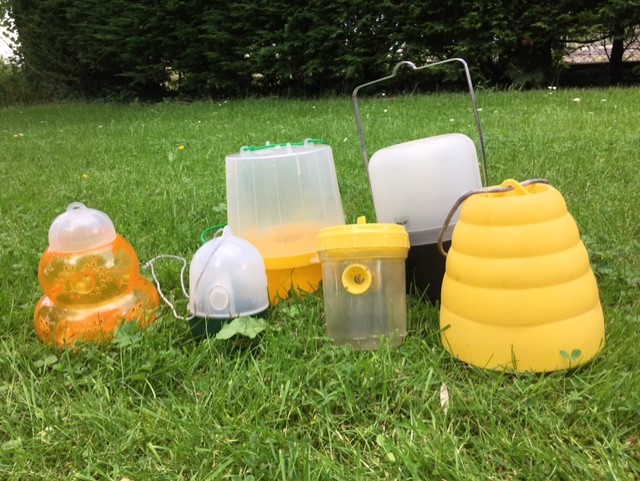Apiary Meeting
‘Managing Wasps' - Useful devices and traps and Asian Hornet
 Photograph of some wasp traps courtesy of Linda and Tony.
Photograph of some wasp traps courtesy of Linda and Tony.Beekeepers start to worry about wasps at this time of year. Wasps can wipe out weak colonies, rob honey stores and disrupt even strong colonies. Now is the time to safeguard your hives.
In a comfortable, shady spot in Linda and Tony's garden, we learnt about the life cycle of wasps and their beneficial role in the ecosystem. Wasps are predators of other insects, e.g. aphids, and important in pest control. Early in the season, they need a protein-rich diet to feed developing larvae which in turn provide the adults with a sugary liquid. However, in late summer to early autumn the queen wasp ceases to lay eggs and, once the larvae have matured, adult wasps need to find another source of sugar. This is when beehives can be targeted. Reducing the size of the hive entrance helps bees defend the hive. Wasp guards , which attach to the hive entrance, are also recommended. We were shown a wide range of wasp traps (image above), with advice on best design and preferred recipe to use as an attractant. Waspinators, which are bags that mimick wasp nests, might be a useful deterrent if hung from trees in the apiary early in the year. Wasp predation appears to vary from year to year and to depend on location. Be prepared!
Chatting over a cup of tea after months of pandemic restrictions was a perfect end to the afternoon.
With thanks to Linda and Tony for a very informative and enjoyable meeting, and to all the experts present who contributed to the meeting.
V. Wilkinson
